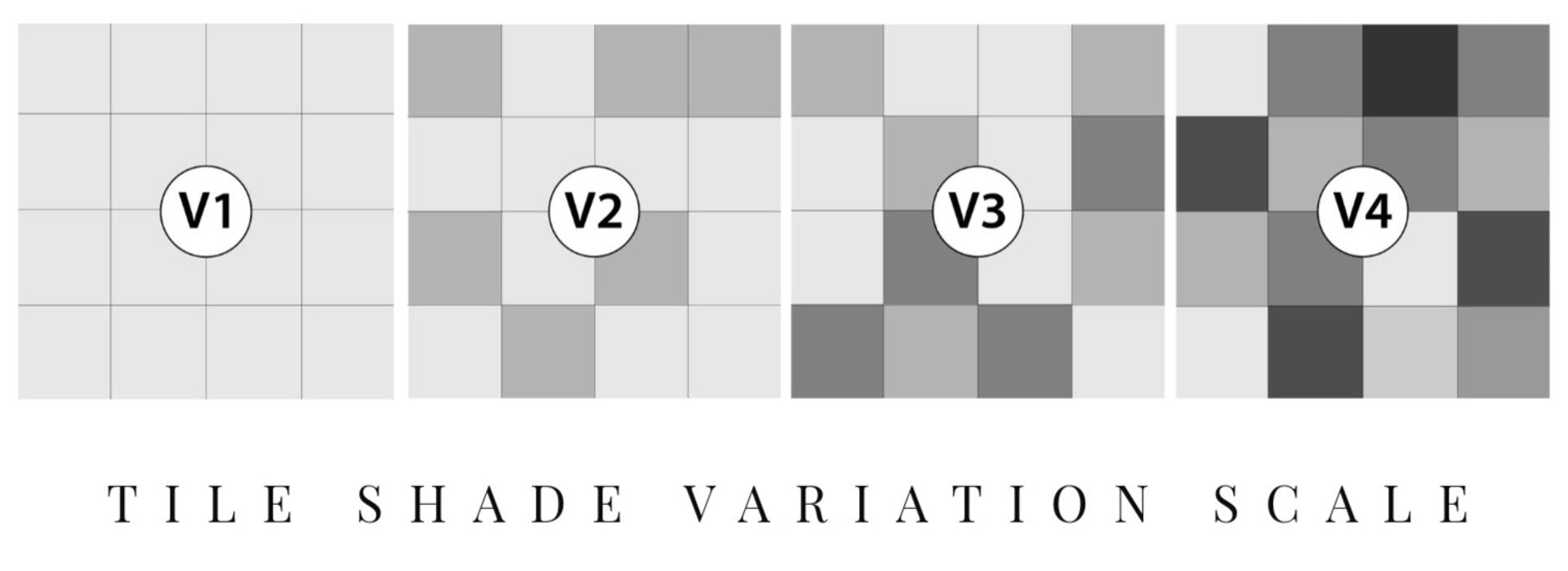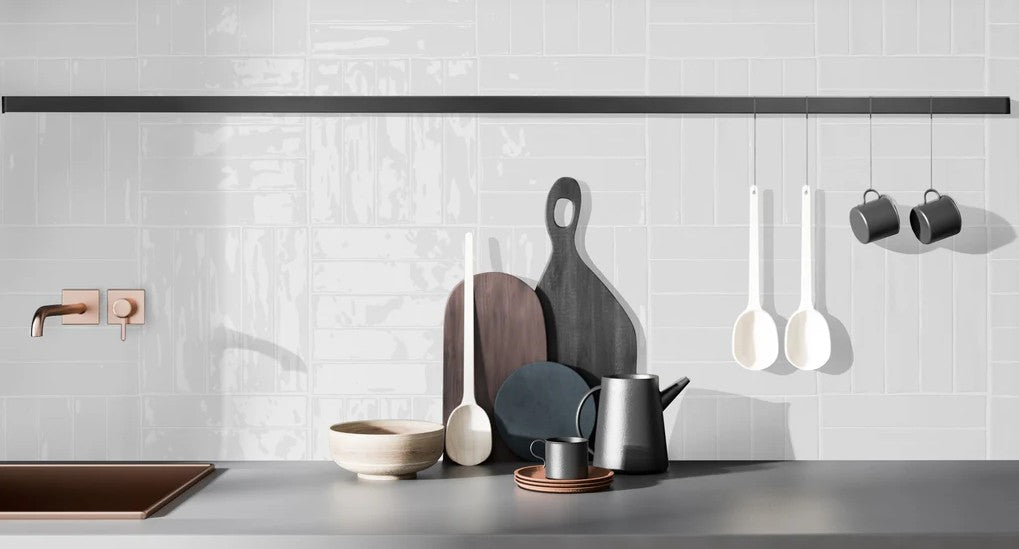Most people pick between porcelain and ceramic tiles just by looking at colors or patterns. That sounds simple. But it hides a big secret. Porcelain tiles absorb less than 0.5 percent water while regular ceramic can soak up to 7 percent. That difference changes everything you thought you knew about where and how to use tile in your home.
Table of Contents
- Defining Porcelain And Ceramic Tiles: What Are They?
- The Importance Of Material Composition In Tiles
- Physical Properties: Durability And Aesthetics Explained
- Applications And Popular Uses Of Porcelain And Ceramic Tiles
- Making The Right Choice: Factors To Consider For Your Project
Quick Summary
| Takeaway | Explanation |
|---|---|
| Understanding tile composition is vital | Differences in raw materials and manufacturing impact durability and performance of tiles. |
| Porcelain tiles are more durable | They resist moisture, wear, and physical stress better than standard ceramic tiles. |
| Consider application specifics when choosing tiles | Match tiles to the environment, like moisture levels and traffic, for optimal functionality. |
| Evaluate long-term costs alongside initial prices | Higher upfront costs for porcelain tiles may lead to lower overall expense due to durability. |
| Explore aesthetic options based on physical properties | Surface finishes affect appearance, maintenance, and durability, impacting design choices. |
Defining Porcelain and Ceramic Tiles: What Are They?
Porcelain and ceramic tiles are fundamental materials in home design and construction, each offering unique characteristics that make them suitable for different applications. While often used interchangeably, these tile types have distinct compositional and performance differences that homeowners and designers should understand.
The Fundamental Composition
At their core, both porcelain and ceramic tiles are made from clay materials, but their manufacturing processes and raw material compositions differ significantly. Ceramic tiles are typically crafted from natural clay mixtures that are molded, dried, and fired at lower temperatures between 1,000 to 1,200 degrees Fahrenheit. Ceramic tile manufacturing involves using red, white, or mixed clay bases that result in varied color and texture options.
Porcelain tiles, a specialized subset of ceramic tiles, are engineered with more refined clay materials and additional minerals like feldspar. These tiles undergo a more rigorous production process, fired at extremely high temperatures around 2,200 to 2,500 degrees Fahrenheit. This intense heat creates an exceptionally dense and less porous final product.
Performance and Application Differences
The manufacturing nuances translate directly into performance characteristics. Porcelain tiles demonstrate superior durability and water resistance compared to standard ceramic tiles. Their dense composition makes them ideal for high-traffic areas, outdoor spaces, and environments with significant moisture exposure.
![]()
Key performance distinctions include:
- Water Absorption: Porcelain tiles absorb less than 0.5% water, while ceramic tiles can absorb up to 7%
- Durability: Porcelain tiles have higher breaking strength and wear resistance
- Application Flexibility: Porcelain works well in residential and commercial settings with extreme temperature variations
For homeowners considering tile options, understanding these fundamental differences helps make informed decisions about exploring floor tile varieties that match specific project requirements and aesthetic preferences.
The following table compares the key features and characteristics of porcelain and ceramic tiles, making it easier to understand their differences and choose the right tile for your project.
| Feature/Characteristic | Porcelain Tile | Ceramic Tile |
|---|---|---|
| Raw Material | Refined clay with added minerals (e.g., feldspar) | Natural clay mixtures (red, white, or mixed) |
| Firing Temperature | 2,200 - 2,500°F | 1,000 - 1,200°F |
| Water Absorption Rate | Less than 0.5% | Up to 7% |
| Density | Very dense, less porous | Less dense, more porous |
| Durability | High resistance to wear, moisture, and stress | Moderate resistance, better for low-traffic areas |
| Suitability | High-traffic, outdoor, and wet environments | Light-use, dry, indoor environments |
| Finish Variety | Can mimic stone, wood, or offer various textures | Wide range of colors and textures |
| Cost | Higher upfront, lower lifetime maintenance | Lower upfront, potentially higher long-term upkeep |
The Importance of Material Composition in Tiles
The material composition of tiles represents far more than aesthetic considerations. It fundamentally determines their performance, durability, and suitability for specific environments. Understanding the intricate relationship between raw materials and tile characteristics helps homeowners and designers make informed selections that balance visual appeal with practical functionality.
Chemical and Mineral Components
Tile materials are complex mixtures of minerals and compounds that significantly impact their final properties. Clay serves as the primary ingredient, but additional elements like feldspar, silica, and quartz play crucial roles in determining tile performance. Material science research reveals that mineral ratios directly influence critical characteristics such as water absorption, thermal resistance, and structural integrity.
Porcelain tiles, for instance, incorporate a higher percentage of refined kaolin clay and feldspar, resulting in a more dense and less porous material. These additional minerals create a more compact molecular structure during high-temperature firing, which enhances the tile’s overall strength and resistance to environmental stressors.
Performance Implications of Composition
The strategic selection of raw materials translates into tangible performance benefits across different tile applications. Different mineral compositions determine essential characteristics such as:
- Thermal Stability: Higher mineral content increases resistance to temperature fluctuations
- Water Resistance: Refined clay and mineral additives reduce porosity and moisture absorption
- Mechanical Strength: Specific mineral ratios enhance breaking strength and wear resistance
For professionals and homeowners looking to explore tile installation options, understanding these compositional nuances becomes critical in selecting materials that meet specific project requirements and environmental challenges.
Physical Properties: Durability and Aesthetics Explained
Durability and aesthetics represent two interconnected aspects of tile selection that dramatically influence both functional performance and visual appeal. Understanding how physical properties translate into real world applications helps homeowners and designers make informed decisions about tile selection.
Mechanical Strength and Structural Integrity
The mechanical properties of porcelain and ceramic tiles differ significantly, directly impacting their long term performance. Ceramic material research demonstrates that tile durability depends on complex interactions between mineral composition, manufacturing processes, and structural density.
Porcelain tiles consistently outperform standard ceramic tiles in mechanical strength tests. Their dense molecular structure, achieved through higher firing temperatures and refined mineral compositions, results in superior resistance to cracking, chipping, and wear. This enhanced durability makes porcelain tiles an excellent choice for high traffic areas, commercial spaces, and environments with significant physical stress.

Surface Characteristics and Visual Appeal
Beyond structural performance, tile materials offer diverse aesthetic possibilities through surface treatments and finishing techniques. The physical composition determines not just durability but also how tiles interact with light, color, and texture. Homeowners can choose between:
- Glossy Finishes: Reflective surfaces that create a sense of spaciousness and luminosity
- Matte Textures: Softer, more subdued appearances that reduce glare and hide minor imperfections
- Textured Surfaces: Enhanced grip and visual depth for both decorative and functional purposes
For those interested in exploring tile finish options, understanding how physical properties influence aesthetic potential becomes crucial in creating visually stunning and functionally robust spaces.
Applications and Popular Uses of Porcelain and Ceramic Tiles
Tiles represent more than mere surface coverings. They are versatile design elements that transform spaces through functionality, aesthetic appeal, and performance characteristics. Understanding the specific applications of porcelain and ceramic tiles helps homeowners and designers make strategic choices that balance practicality with visual elegance.
Interior Design and Residential Applications
Ceramic construction research reveals the extensive versatility of tiles in residential environments. Ceramic tiles excel in areas requiring moisture resistance and easy maintenance, making them perfect for kitchens, bathrooms, and laundry spaces. Their affordability and diverse design options allow homeowners to create visually compelling surfaces without compromising on durability.
Porcelain tiles, with their superior density and water resistance, are particularly suited for high traffic zones. Living rooms, entryways, and commercial spaces benefit from porcelain’s remarkable wear resistance and ability to mimic natural stone, wood, and other premium materials. Their low porosity makes them resistant to stains, scratches, and moisture penetration.
Specialized Commercial and Exterior Uses
Beyond residential applications, tiles play critical roles in commercial and exterior design. Different tile types offer unique advantages across various settings:
- Restaurants and Commercial Kitchens: Porcelain tiles provide hygienic, easy to clean surfaces that withstand heavy foot traffic
- Outdoor Patios and Pool Areas: Slip resistant porcelain tiles offer durability against weather fluctuations
- Healthcare Facilities: Ceramic and porcelain tiles support stringent cleanliness requirements
For professionals seeking comprehensive floor tile guidance, understanding the nuanced applications of different tile materials becomes essential in creating functional, aesthetically pleasing environments.
Making the Right Choice: Factors to Consider for Your Project
Selecting the appropriate tile requires a strategic approach that considers multiple interconnected factors. Homeowners and design professionals must balance aesthetic preferences with practical performance requirements to ensure long term satisfaction and functionality.
Budget and Cost Considerations
Research from construction materials analysis indicates that initial material costs represent only one aspect of tile selection. While ceramic tiles typically offer lower upfront expenses, porcelain tiles provide superior long term value through enhanced durability and reduced maintenance requirements.
The total project cost encompasses more than just material prices. Installation complexity, substrate preparation, professional labor, and potential future replacement expenses all contribute to the overall financial investment. Porcelain tiles, though more expensive initially, often result in lower lifetime maintenance costs due to their exceptional wear resistance and minimal repair needs.
Environmental and Performance Evaluation
Choosing between porcelain and ceramic tiles demands careful assessment of specific environmental conditions and intended usage. Different spaces present unique challenges that influence tile performance:
- Moisture Exposure: High humidity areas require low water absorption rates
- Temperature Variations: Tiles must withstand thermal expansion and contraction
- Physical Stress: High traffic zones need superior breaking strength
- Aesthetic Longevity: Color retention and surface finish durability matter
For professionals seeking detailed floor tile selection insights, understanding these nuanced performance metrics becomes crucial in making informed decisions that balance design aspirations with practical functionality.
This table summarizes performance considerations to help evaluate which tile type best matches different project environments and usage requirements.
| Performance Factor | Porcelain Tile | Ceramic Tile |
|---|---|---|
| Water Resistance | Excellent (very low absorption) | Good to moderate (higher absorption) |
| Thermal Stability | High resistance to temperature changes | Moderate resistance |
| Breaking Strength | High | Moderate |
| Stain and Scratch Resistance | Very resistant | Adequate for residential use |
| Maintenance Needs | Low | Moderate |
| Aesthetic Longevity | Color and finish last longer | May show more signs of wear over time |
Find the Perfect Tile Solution for Your Unique Needs
Are you feeling overwhelmed by the choice between porcelain and ceramic tiles? You are not alone. Many homeowners and professionals struggle to balance durability, water resistance, and style when updating their spaces. This guide helped clarify how material composition, performance, and physical properties affect your long-term satisfaction. Now it is time to use this knowledge to find a tile that truly works for you.

At TileChoices.com you can shop with confidence knowing you have access to a wide variety of floor tile options for every application. Compare materials, finishes, and inspiration for kitchens, bathrooms, and beyond. Our in-depth product descriptions, images, and support make it easy to turn what you have learned into the perfect choice for your project. Visit us today and transform your vision into reality—discover your ideal tile match before your next renovation begins.
Frequently Asked Questions
What are the main differences between porcelain and ceramic tiles?
Porcelain tiles are made from more refined clay and fired at higher temperatures than ceramic tiles, resulting in a denser, less porous, and more durable material. Ceramic tiles are typically made from natural clay mixtures and fired at lower temperatures, making them better suited for low-traffic areas.
Are porcelain tiles more water-resistant than ceramic tiles?
Yes, porcelain tiles absorb less than 0.5% water, making them highly water-resistant. In contrast, ceramic tiles can absorb up to 7% water, which makes them less suitable for areas prone to moisture.
Which type of tile is better for high-traffic areas?
Porcelain tiles are better suited for high-traffic areas due to their superior durability and wear resistance. Their density and strength make them ideal for environments such as commercial spaces, entryways, and other places with heavy foot traffic.
Can porcelain tiles be used outdoors?
Yes, porcelain tiles are ideal for outdoor use as they are more resistant to weather fluctuations and moisture. Their low porosity and durability make them suitable for patios, pool areas, and other exterior applications.









